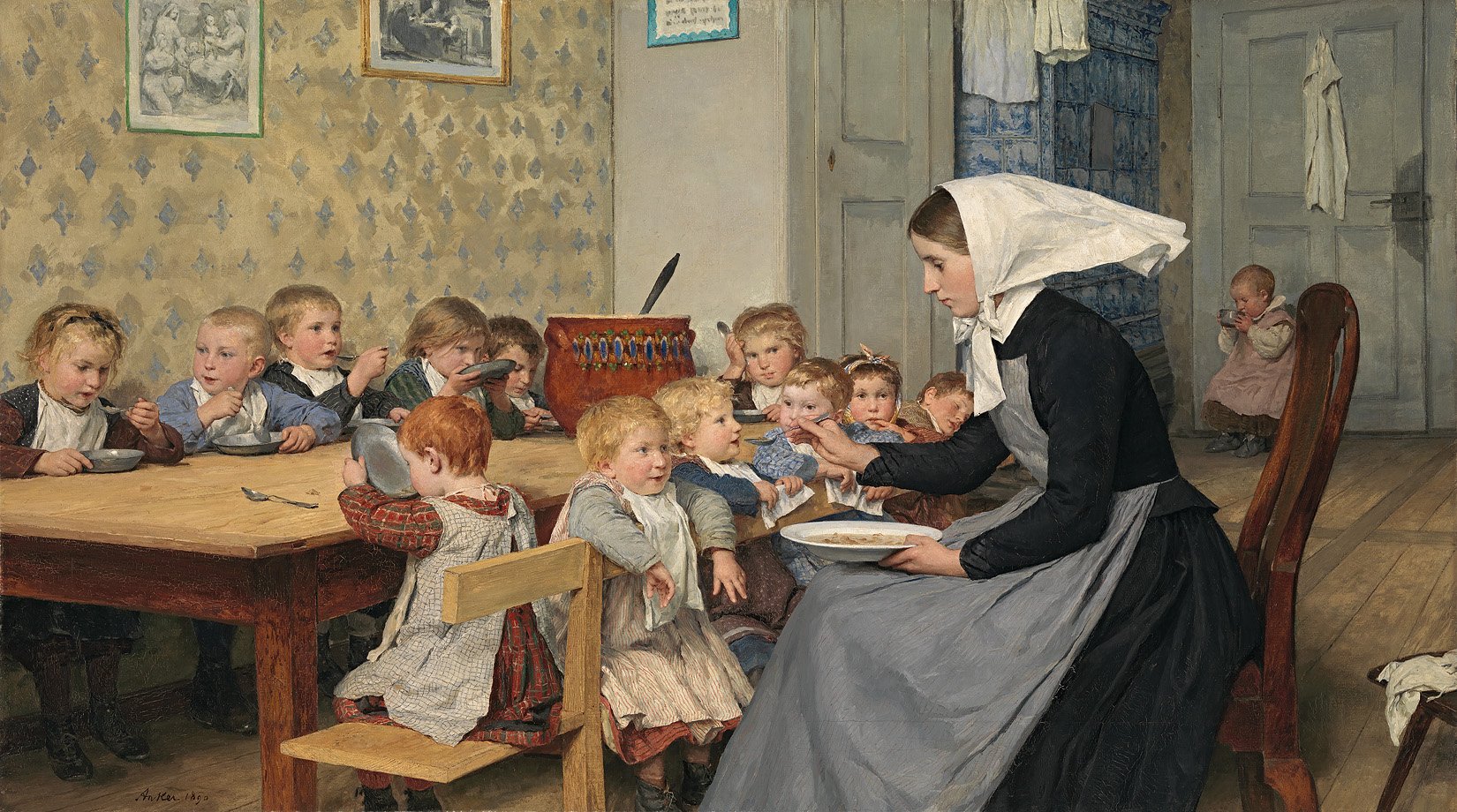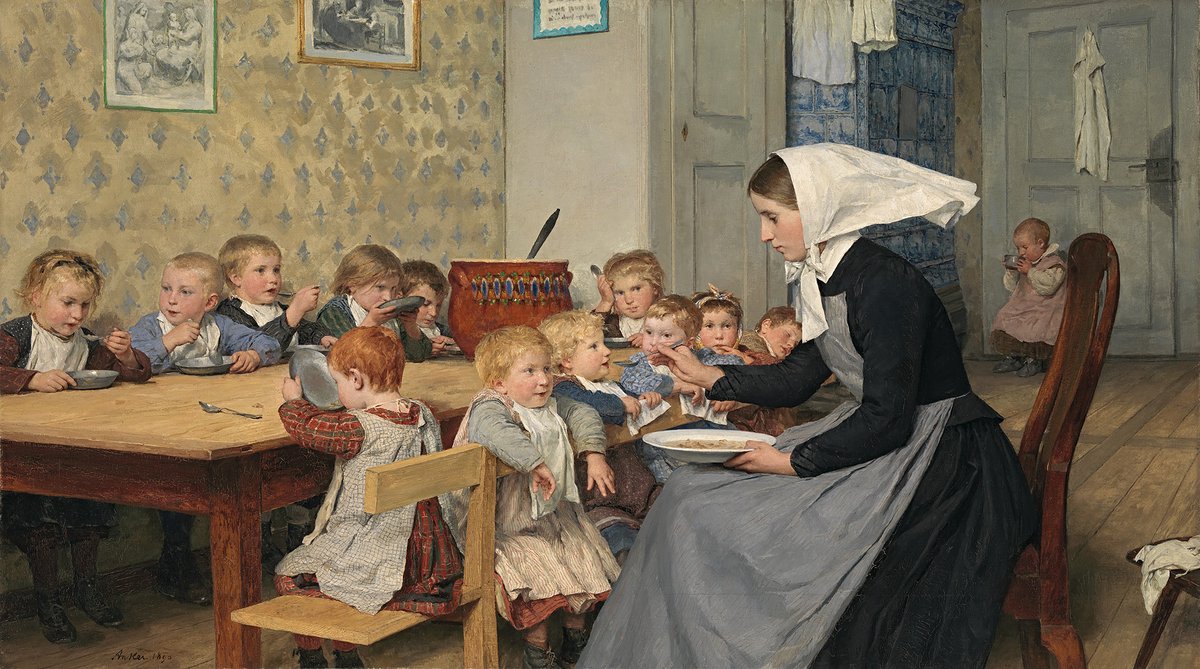Albert Anker
The crèche, 1890

Albert Anker
The Crèche, 1890
Kunst Museum Winterthur, Stiftung Oskar Reinhart, Ankauf, 1950
SIK-ISEA, Zürich (Philipp Hitz)
There is a popular anecdote about Albert Anker’s nursery school. It is said that the deaconess portrayed here was embarrassed about her dirty bonnet and asked the artist not to paint it. She quickly folded a fresh napkin and tied it around her head. Anker complied with her request and painted her clean, white headdress, but couldn’t resist including the used bonnet in the painting anyway: tongue in cheek, he added it at the bottom right of the canvas, on the chair where the sitter had placed it.
This fine story illustrates that Anker was a man of compassion. He was interested in people, their worries and their feelings, their lives and their emotions. With a keen eye and an expert brush, he created portrayals of the people of the time, mostly from rural areas.
He was particularly interested in the elderly and children – both parts of society that were not at the centre of attention in everyday life. His empathy is particularly well expressed in this masterful nursery of 1890: each child is depicted individually. They are not – as is usually the case – shown merely as small adults. Instead, Anker shows them in typical childlike behaviour: one has fallen asleep, another is suffering from a toothache and one has obviously been naughty and has to eat on the little bench in the corner. Despite the simple surroundings and the frugal meal, which consists of nothing but soup, the round, contented children’s faces radiate confidence. It is assumed that the painter depicted a nursery’ in Bern’s Matten neighbourhood, where poorer people tended to live at the time. In this nursery, children were looked after by a deaconess during the day while their parents worked hard.
The work is one of Anker’s most successful multi-figure compositions. Numerous studies preceded the painting, for which the artist made various sketches. Sometimes the same children modelled for different heads. The horizontal format of the painting allows the space to grow more in width than in height and it is impressive due to its complex composition and the differentiated play of colours. The bright colours of the work appear to be motivated by the motif. Albert Anker’s work is characterized by a dialogue between light and dark shades, typically of urban and rural motifs, with urban scenes generally painted in lighter and rural ones in darker hues. Anker himself led a life alternating between town and country: he lived in the rural area of Ins in the Bernese Seeland, but usually spent winters in Paris, where he had a studio and many contacts in the art world.

Albert Anker
The Crèche, 1890
Kunst Museum Winterthur, Stiftung Oskar Reinhart, Ankauf, 1950
SIK-ISEA, Zürich (Philipp Hitz)


